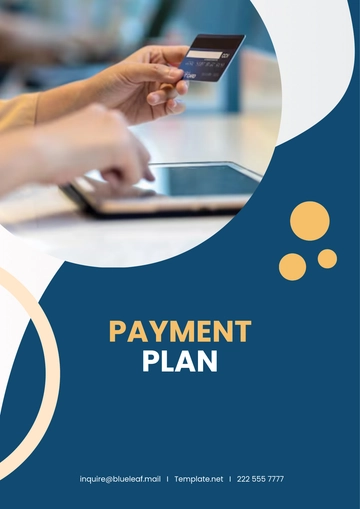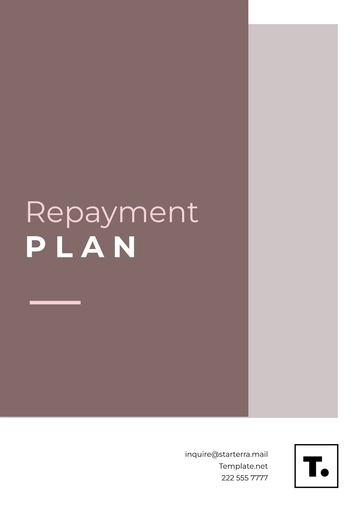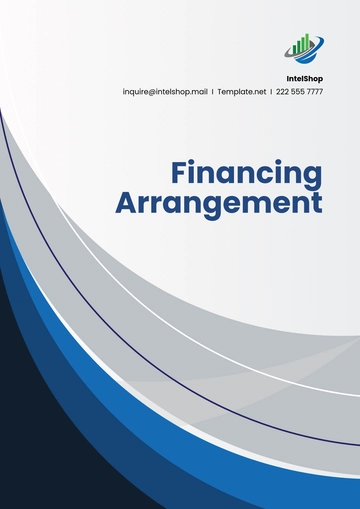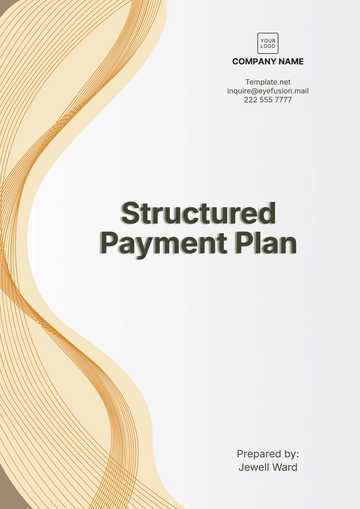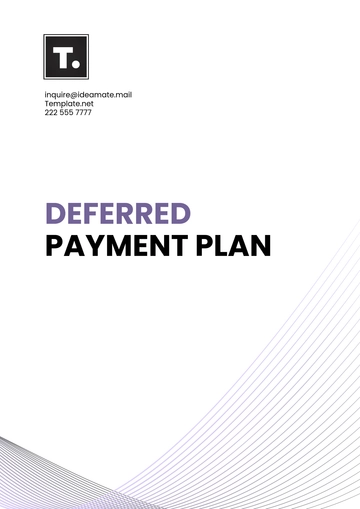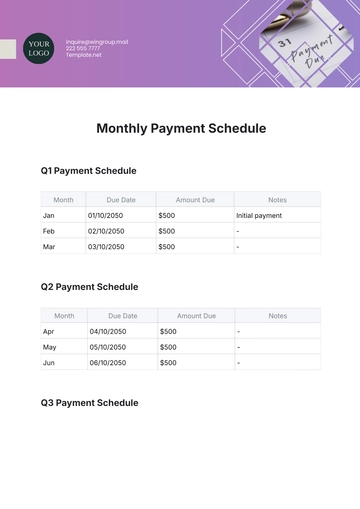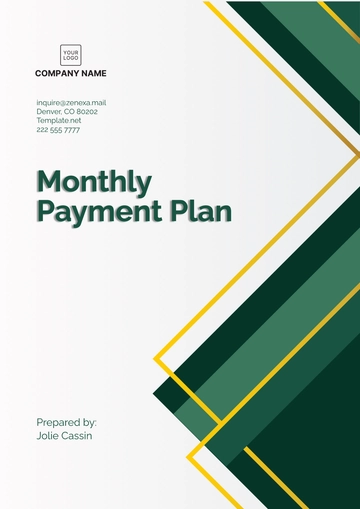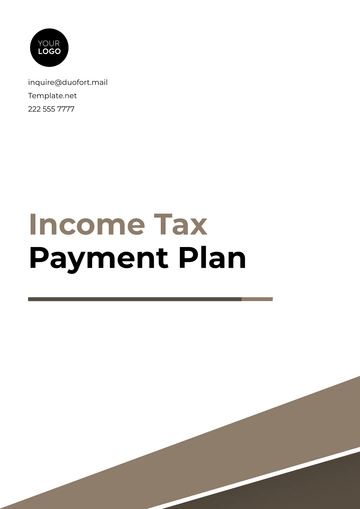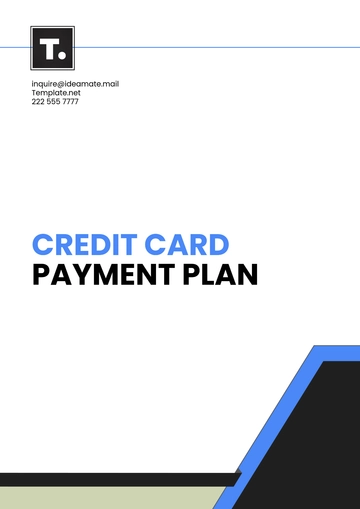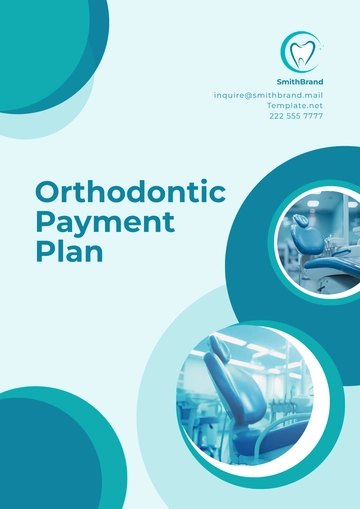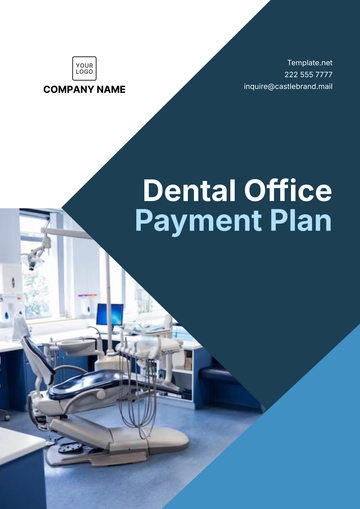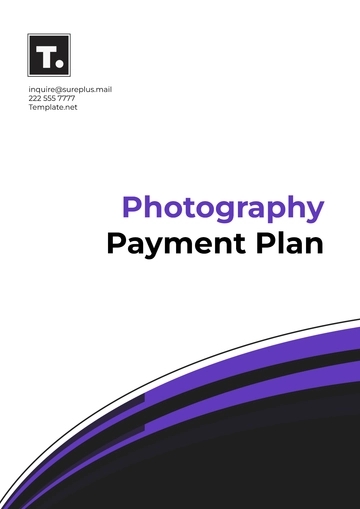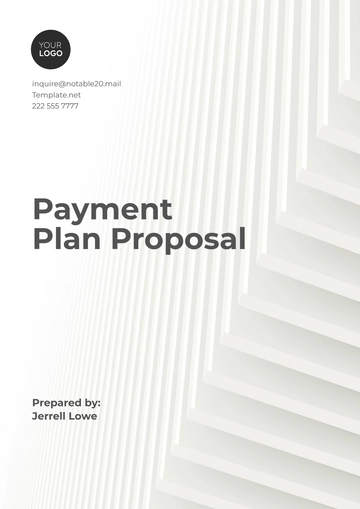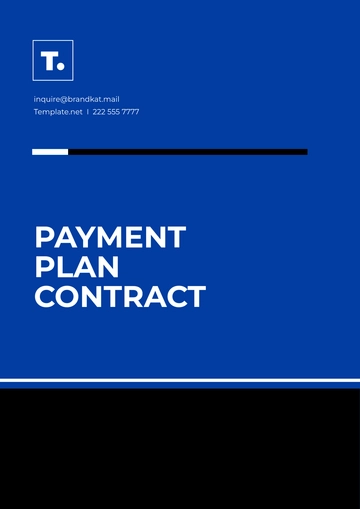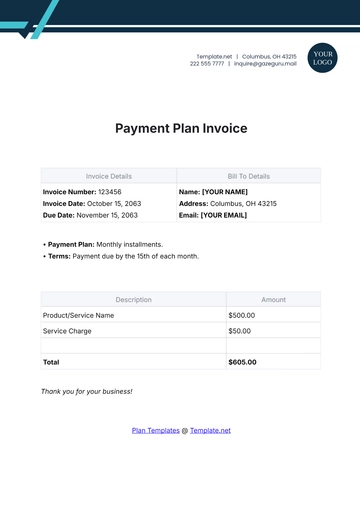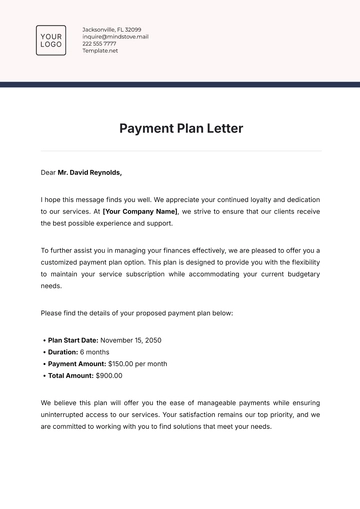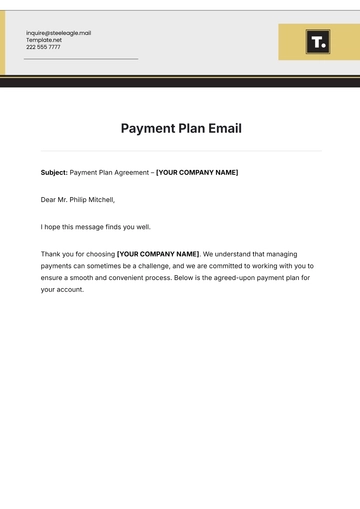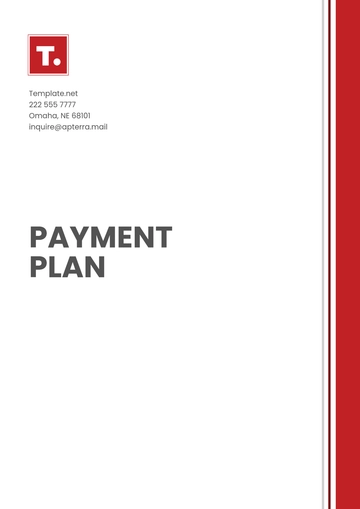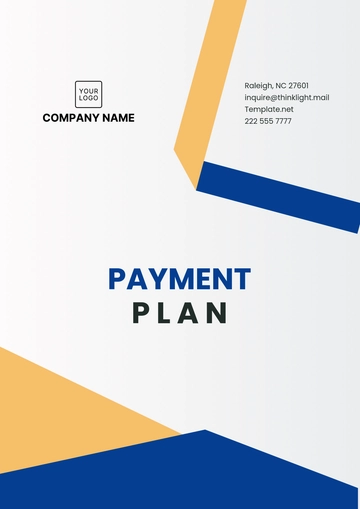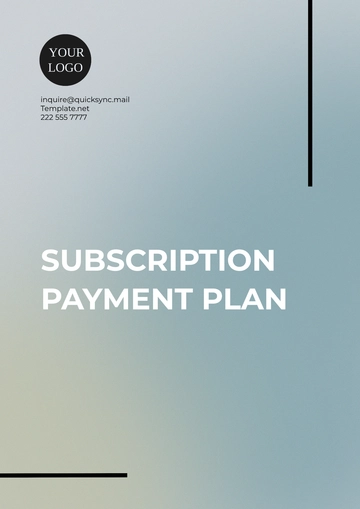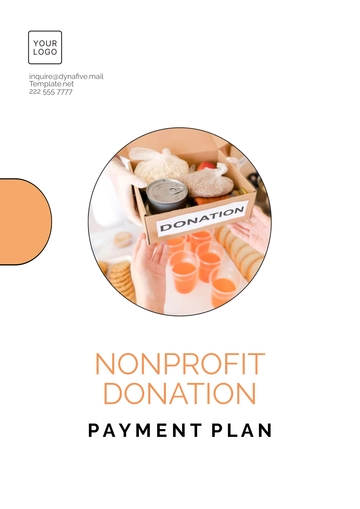Free Income Tax Payment Plan
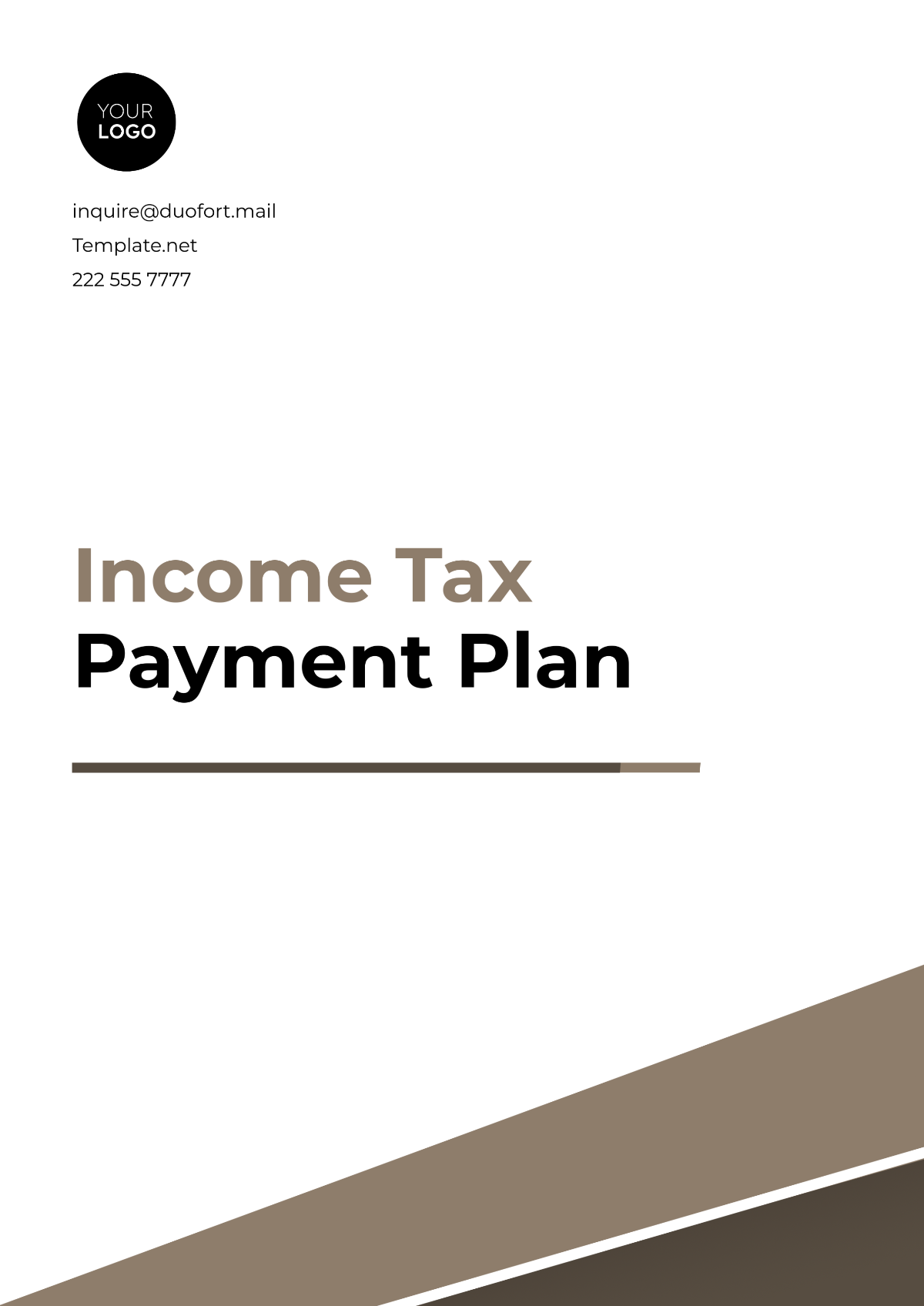
I. Introduction
Developing an Income Tax Payment Plan is essential for managing tax liabilities efficiently and avoiding penalties. This plan will outline the steps to assess tax obligations and provide strategies for payment.
II. Assess Your Tax Obligations
A. Calculate Your Taxable Income
Gather financial documents including W-2s, 1099s, and other income statements.
Deduct allowable expenses and adjustments to get your taxable income.
B. Determine Applicable Tax Rates
Refer to the IRS tax brackets for your filing status.
Consider state and local tax rates.
C. Estimate Your Tax Liability
Utilize tax calculators or consult with a tax professional to estimate what you owe. Keeping track of withholdings and estimated tax payments made throughout the year can provide clarity.
III. Plan Your Payment Strategy
A. Leverage a Tax Payment Plan
Determine if you qualify for an IRS payment plan.
Choose between short-term and long-term payment plans based on your financial situation.
B. Explore Alternative Payment Options
Consider a personal loan or credit card with low-interest rates.
Use savings or an emergency fund if feasible.
C. Set Up Automatic Payments
Ensure timely payments by setting up automatic debits from your bank account to avoid late fees and penalties.
IV. Monitor and Adjust Your Payment Plan
A. Review Financial Status Regularly
Periodically assess your financial situation to adjust your payment plan as necessary, ensuring it remains suitable and sustainable.
B. Communicate with Tax Authorities
If circumstances change, proactively contact tax agencies to discuss potential adjustments to your payment terms.
V. Conclusion
By creating and adhering to an Income Tax Payment Plan, individuals can effectively manage their fiscal responsibilities and reduce the stress associated with tax payments. Utilizing available resources and professional assistance can further streamline this process.
Prepared by:
[YOUR NAME]
[YOUR COMPANY NAME]
- 100% Customizable, free editor
- Access 1 Million+ Templates, photo’s & graphics
- Download or share as a template
- Click and replace photos, graphics, text, backgrounds
- Resize, crop, AI write & more
- Access advanced editor
Template.net’s Income Tax Payment Plan Template is designed to help individuals and businesses effectively plan and manage tax payments. Fully customizable and editable in our AI Editor Tool, this template allows for streamlined, clear installment arrangements, ensuring compliance and facilitating a structured approach to managing tax obligations with professionalism and accuracy.
You may also like
- Finance Plan
- Construction Plan
- Sales Plan
- Development Plan
- Career Plan
- Budget Plan
- HR Plan
- Education Plan
- Transition Plan
- Work Plan
- Training Plan
- Communication Plan
- Operation Plan
- Health And Safety Plan
- Strategy Plan
- Professional Development Plan
- Advertising Plan
- Risk Management Plan
- Restaurant Plan
- School Plan
- Nursing Home Patient Care Plan
- Nursing Care Plan
- Plan Event
- Startup Plan
- Social Media Plan
- Staffing Plan
- Annual Plan
- Content Plan
- Payment Plan
- Implementation Plan
- Hotel Plan
- Workout Plan
- Accounting Plan
- Campaign Plan
- Essay Plan
- 30 60 90 Day Plan
- Research Plan
- Recruitment Plan
- 90 Day Plan
- Quarterly Plan
- Emergency Plan
- 5 Year Plan
- Gym Plan
- Personal Plan
- IT and Software Plan
- Treatment Plan
- Real Estate Plan
- Law Firm Plan
- Healthcare Plan
- Improvement Plan
- Media Plan
- 5 Year Business Plan
- Learning Plan
- Marketing Campaign Plan
- Travel Agency Plan
- Cleaning Services Plan
- Interior Design Plan
- Performance Plan
- PR Plan
- Birth Plan
- Life Plan
- SEO Plan
- Disaster Recovery Plan
- Continuity Plan
- Launch Plan
- Legal Plan
- Behavior Plan
- Performance Improvement Plan
- Salon Plan
- Security Plan
- Security Management Plan
- Employee Development Plan
- Quality Plan
- Service Improvement Plan
- Growth Plan
- Incident Response Plan
- Basketball Plan
- Emergency Action Plan
- Product Launch Plan
- Spa Plan
- Employee Training Plan
- Data Analysis Plan
- Employee Action Plan
- Territory Plan
- Audit Plan
- Classroom Plan
- Activity Plan
- Parenting Plan
- Care Plan
- Project Execution Plan
- Exercise Plan
- Internship Plan
- Software Development Plan
- Continuous Improvement Plan
- Leave Plan
- 90 Day Sales Plan
- Advertising Agency Plan
- Employee Transition Plan
- Smart Action Plan
- Workplace Safety Plan
- Behavior Change Plan
- Contingency Plan
- Continuity of Operations Plan
- Health Plan
- Quality Control Plan
- Self Plan
- Sports Development Plan
- Change Management Plan
- Ecommerce Plan
- Personal Financial Plan
- Process Improvement Plan
- 30-60-90 Day Sales Plan
- Crisis Management Plan
- Engagement Plan
- Execution Plan
- Pandemic Plan
- Quality Assurance Plan
- Service Continuity Plan
- Agile Project Plan
- Fundraising Plan
- Job Transition Plan
- Asset Maintenance Plan
- Maintenance Plan
- Software Test Plan
- Staff Training and Development Plan
- 3 Year Plan
- Brand Activation Plan
- Release Plan
- Resource Plan
- Risk Mitigation Plan
- Teacher Plan
- 30 60 90 Day Plan for New Manager
- Food Safety Plan
- Food Truck Plan
- Hiring Plan
- Quality Management Plan
- Wellness Plan
- Behavior Intervention Plan
- Bonus Plan
- Investment Plan
- Maternity Leave Plan
- Pandemic Response Plan
- Succession Planning
- Coaching Plan
- Configuration Management Plan
- Remote Work Plan
- Self Care Plan
- Teaching Plan
- 100-Day Plan
- HACCP Plan
- Student Plan
- Sustainability Plan
- 30 60 90 Day Plan for Interview
- Access Plan
- Site Specific Safety Plan
